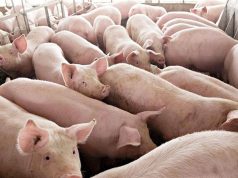Philippine PMI weakest so far in August
BUSINESS improved for factories in the country but at the weakest pace, so far, in August, according to a monthly survey IHS Markit conducts for Nikkei, Inc. that showed Vietnam, Singapore and Indonesia dislodging the Philippines from the lead in Southeast Asia.
The seasonally adjusted Nikkei Philippines Manufacturing Purchasing Managers’ Index (PMI) logged 50.6 in August, marking the fourth straight month of slowdown and the weakest improvement since the survey on the country began in January last year.
However, it was still better than the 50.4 reading that month of the seven of 10 members of the Association of Southeast Asian Nations (ASEAN) covered by the survey (Indonesia, Malaysia, Myanmar, Philippines, Singapore, Thailand and Vietnam), up from July’s 49.3.
The 50 mark separates readings denoting improvement of factory activity from the preceding month from those spelling erosion.
The manufacturing PMI consists of five sub-indices, with new orders having the biggest weight at 30%, followed by output (25%), employment (20%), suppliers’ delivery times (15%) and stocks of purchases (10%).
“After a subdued start to the third quarter, the Philippines manufacturing economy lost further momentum in August,” the Philippine report read, particularly noting a marked slowdown in growth rates of both output and new orders “[t]hat led to a fall in employment levels.”
“The latest reading signalled only a marginal improvement in the health of the sector, contrasting with the solid growth seen in the first half of the year.”
The report noted “a softening” of sales to both domestic and foreign consumers, with a decline in new export orders that was the second such fall in the Philippine survey’s 20-month history. Foreign orders’ “rate of contraction was moderate, but the reading was the lowest on record,” it noted.
Moreover, respondents cited shortages of raw materials that prompted them to turn away some orders from abroad.
Production increase, the report added, was “the weakest on record.”
“The softer growth in demand led to a fall in employment — the first time in the survey history,” the report quoted IHS Marking Principal Economist Bernard Aw as saying.
The rate of job decline was “modest”, the report said, and “[while] there were some cases of layoffs due to lower production requirements or non-performance, most firms highlighted that voluntary leavers as the main factor.”
Moreover, with the peso weakening to 11-year lows in value against the dollar last month, manufacturing “input cost inflation picked up to the highest recorded by the survey for four months.”
The central bank said last week that it expects August’s headline inflation rate — scheduled to be reported today — to have clocked 2.6-3.4% against July’s 2.8% and August 2016’s 1.8%, while BusinessWorld’s poll of 13 economists last week yielded a median estimate of 3.0%.
“Matching higher costs, firms raised selling prices again in August, passing on some of the increased costs to clients,” the report read.
“The survey showed that average charges rose to the greatest extent since April.”
OUTLOOK
On a brighter note, optimism among survey respondents “remained elevated in August despite the Future Output Index dipping to a 14-month low.”
Survey results coincided with those of the third-quarter Business Expectations Survey which the Bangko Sentral ng Pilipinas (BSP) conducted July 3-Aug. 18 among respondents of 1,480 firms nationwide that dragged the overall confidence index to a 37.9% net reading that was the weakest in three years, or since the 34.4% logged in 2014’s third quarter.
Among manufacturers covered by BSP’s survey, 31.8% planned to expand in the “next quarter” — the lowest reading in three quarters — compared to the 34.7% logged in the second-quarter survey.
However, the fourth-quarter outlook improved in BSP’s survey, with volume of business activity index picking up to 49.6% that was the best “next quarter” reading in six quarters or since the 50.7% of 2016’s first quarter, while the employment outlook index improved to 27.3% from the second-quarter survey’s 24.7%.
“While short-term prospects appeared increasingly weak, longer-term expectations remained optimistic,” the Nikkei Philippines Manufacturing PMI report quoted Mr. Aw as saying.
“The majority of surveyed companies continued to anticipate output growth over the next year, suggesting that the recent slowdown could be temporary,” he noted.
“As for job prospects, an ongoing lack of capacity pressure — as signalled by a persistent fall in backlogs — meant that Filipino manufacturers may not be in a hurry to boost hiring.”
VIETNAM REGAINS ASEAN LEAD
The headline Nikkei ASEAN Manufacturing Purchasing Managers’ Index this time showed Vietnam retaking the lead which it lost to the Philippines in May after a three-month run at the helm.
“Vietnam led the PMI rankings in August, displacing the Philippines and was the only nation to see its rate of improvement picking up since July,” the ASEAN report read, adding that “Singapore, Indonesia and Malaysia returned to growth after showing deteriorations in July.”
“After a weak start to the third quarter, the ASEAN manufacturing sector returned to growth in August, with the PMI showing an improvement in overall business conditions,” it noted.
“Encouragingly, the survey highlighted the broad-based nature of the renewed upturn, with five out of seven monitored countries indicating an improvement in manufacturing conditions, up from two in July.”
At the same time, however, ASEAN “business confidence remained below the historical average despite improving from July, suggesting that firms will maintain a cautious approach to staff hiring.”




